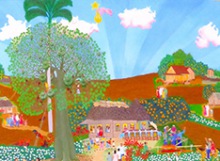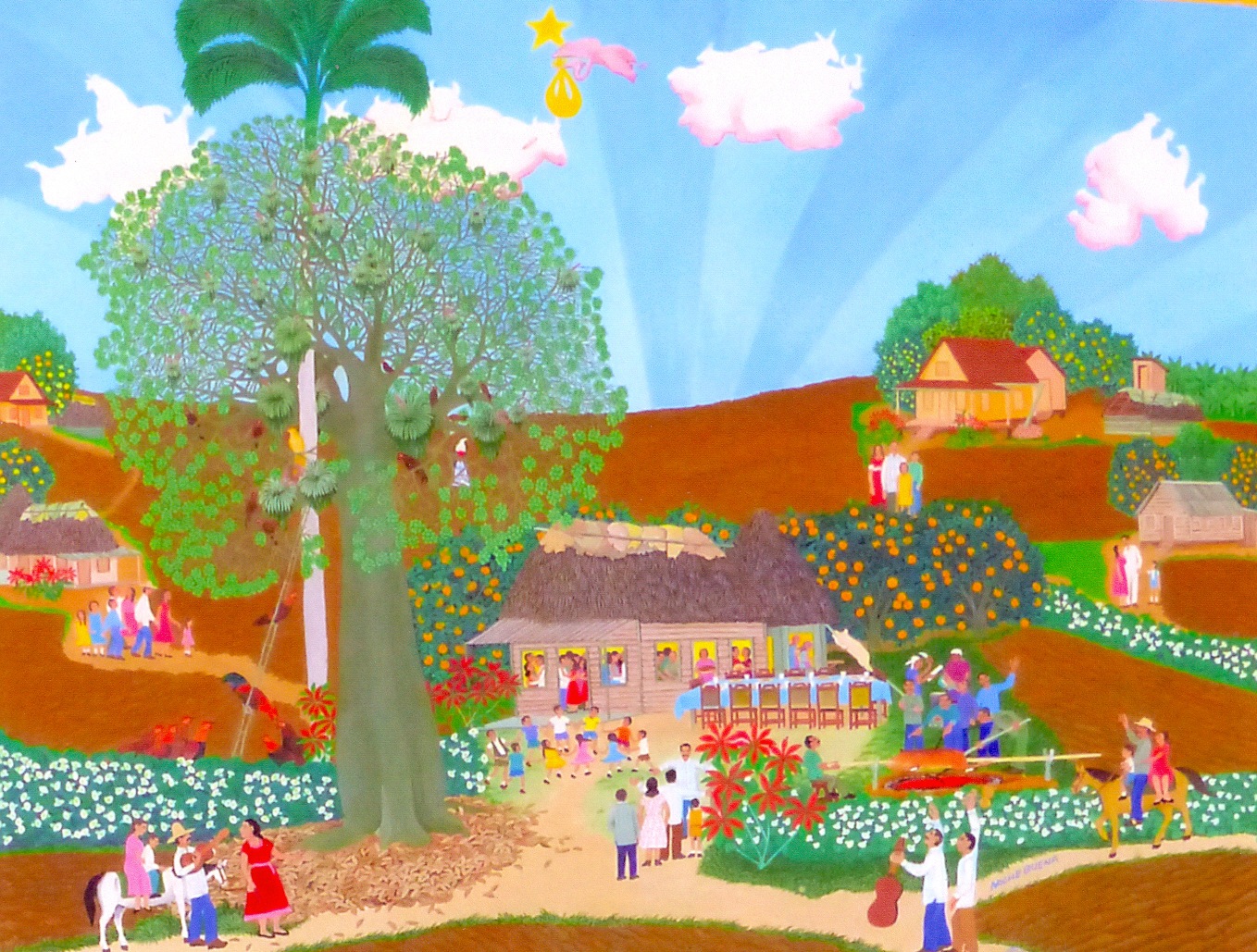
The 2015 Event Will Host One of the Largest Contingents of Master Cuban Painters
Santa Fe, NM—With the announcement by President Obama in December 2014 that he would normalize diplomatic relations with Cuba and take steps to increase travel and commerce between our countries, Americans’ appetite to learn more about Cuban art has been whetted. The International Folk Art Market | Santa Fe is uniquely positioned to shine light on dynamic Cuban art traditions that have been curtained behind an embargo since 1961.
In 2015, the Market welcomes the work of 17 master Cuban folk artists. This very significant representation of Cuban arte naïf painting is a direct result of the Market’s 12-year history of supporting and deepening relationships in the country. Folk art from Cuban master artists first appeared at the Market in 2010.
International Folk Art Alliance board member Peggy Gaustad, who organizes annual folk art tours to Cuba on behalf of IFAA, the Market’s parent organization, explains that Cuban master folk artists are best known for the genre of painting known as arte naïf, a term coined at the turn of the 19th century to describe the work of Henri Rousseau. “The reaction to it is immediate,” she says.
If naïve painting from Cuba is dynamic, colorful, and accessible, it’s also evidence of how arte naïf the world over spotlights artists’ eternal fascination with the everyday lives of their countrymen. Arte naïf’s cultural importance in Cuba is marked by an annual exhibition and competition, held in November in Havana.
One of the six Cuban artists who will attend the Market this year, Cenia Gutiérrez Alfonso, took first prize at that contest in 2014. Alfonso depicts mythical figures, legends, and fairies. She describes her award-winning work as “materializing dreams” and negotiating between urban and rural life.
The women of Alfonso’s hometown of Cienfuegos, Cuba, have been a longtime inspiration for painter Carlos Alberto Cáceres. Caceres’s acrylic-on-canvas technique pays homage to village women, guajiras, whose lives in the Afro-Cubano barrio reflect their love for color and pattern in dress.
Caceres innovated a pointillist painting style that derives from capping paint-filled toothpaste tubes with needle tips in order to apply pinpoint dots to his canvases. Also completely attuned to domestic Cuba is Roberto Domingo Gil Esteban, whose motif is a ubiquitous rooster, who appears as high up as church belfries.
Painter Nancy Reyes Suarez was trained as an architect. She has participated in numerous painting shows, including ones in Peru, Brazil, and England. Her orderly paintings, packed with color and symbolism, are considered sumptuous feasts to the orishas, the gods and goddesses of Santeria.
Santeria in Cuba incorporates the myths and rituals brought to the country in the early 16th century from Western Africa. Each orisha is depicted according to their particular strengths, attributes, colors and associations.
Whereas painters like Reyes and Alfonso paint in acrylic and focus more on mythology, a group of naïve painters from eastern Cuba use oil paints on canvas to portray intricate images of village life and domestic scenes.
This art collective, known as El Grupo Bayate (EGB), from the small town of Mella, outside of Santiago de Cuba, will be exhibiting work by more than a dozen of its members. EGB was founded in 1994 by Luis Joaquin Rodríguez. Rodriguez is considered “El Maestro” of the group having taught many in the village how to paint. Rodriguez’s son, who signs his work “El Estudiante,” will also be present in the Cuba booth at the Market this year.
Rodriguez (El Estudiante) describes the work of the group in this way: “The first thing that our work demonstrates is the sense of belonging and the great love that we the painters have for our community and all of its parts: the people and their everyday lives; the diversity of our religious rituals; our favorite sport – baseball; our main industry – sugar; fishermen; farmers; street musicians; our beautiful landscapes; and the memories of our childhood. In our work, there will always be a philosophy unique to our community and its people that we want to portray as painters. Our objective is to guarantee that the traditions of our community are preserved along with our cultural identity.”
“They truly represent what a co-op and sense of community should be about,” Gaustad says. “Any time we go (on a Passport to Folk Art tour) and visit them, they open it up to the entire community, and there will be 30 artists waiting to greet us with music, food and enormous good will.”
Despite Cuba’s years of isolation from the United States, what any visitor to the Market this summer will instantly notice is the constant vibrancy of Cuban cultural tradition. The paintings are windows into the country.
Market Logistics: The International Folk Art Market | Santa Fe opens on the evening of July 10 and runs through July 12, 2015, at the beautiful Milner Plaza on Santa Fe’s renowned Museum Hill. The venue offers stunning views of the Sangre de Cristo Mountains. For ticket sales and more detailed information, go to 172.97.101.154.
For more information, interview requests, and photos, please contact Clare Hertel at 505-474-6783 or clare@clarehertelcommunications.com.
###
